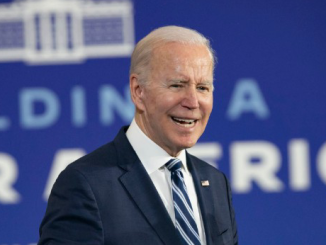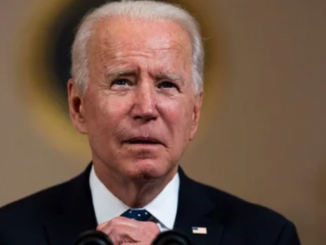
OPINION:
Employer-sponsored insurance is the bedrock of American health care. Over 155 million Americans rely on their employers for health insurance and, according to a March 2021 survey, more than two-thirds were satisfied with their coverage. So why are we being told constantly that America’s health care system is broken? And why is the Biden administration waging a war against the private health coverage a majority of Americans enjoy and upon which they rely?
A lack of consumer choice, consolidation in the health care market, and increased government intervention and subsidization has made health care unaffordable for middle-class America. Over the past two decades, premiums for individual coverage increased 213% and premiums for family coverage increased 245%, far outpacing the 60% increases in overall prices. The majority of insured adults agree that the single most important priority when it comes to health care reform should be reducing health care costs.
As inflation is soaring across the country, the answer to lowering health care prices should not be increased spending and government subsidies. Instead, Congress should look at ways to disrupt the health care market and correct distorted economic incentives which create barriers for competition.
Unfortunately, many in Congress believe the only solution to lowering costs is to eliminate private insurance altogether and replace it with a government-run health care system, like Medicare-for-All. However, eliminating private insurance would be a grave mistake. Denying patients and families the opportunity to make their own health care decisions is un-American.
Still, Democrats like Representative Pramila Jayapal (D-WA) are candid about their desire to get rid of employer coverage to clear the path for Medicare-for-All. As she stated in a recent interview, “Medicare-for-All would cut the dangerous ties between employment and health coverage.” Calling the health insurance option that most Americans prefer “dangerous” is disingenuous and absurd.
Furthermore, Medicare-for-All is not the affordable solution Americans are looking for. An estimate released by the Mercatus Center states that the current Medicare-for-All bill would cost $32.6 trillion over the first ten years of full implementation. This would put an unprecedented strain on taxpayers. Even doubling all federal individual and corporate income tax would not meet the costs of Medicare-for-All. Additionally, this proposal would move millions of Americans onto a government program that is projected to become insolvent by 2026, further jeopardizing the care of 6.2 million seniors enrolled in Medicare.
Other proposals to lower health care costs call for growing and expanding government subsidies for private insurance plans through the Obamacare exchanges. Unfortunately, the subsidies are designed to mask the true cost of the health plan for the consumers and allow insurers to raise prices unchecked. This creates an inflationary effect that pushes up prices and premiums for Americans not receiving subsidies. Unsubsidized middle-class Americans now find themselves not only paying more for their health coverage, but additionally being responsible for even more government debt.
Democrats’ so-called American Rescue Plan Act (ARPA) temporarily expanded Obamacare subsidies through the end of this year. Democrats are calling to extend or make these increased subsidies permanent. This is an extremely poor use of taxpayer dollars. The projected subsidy expansion equates to about $17,000 each year per newly insured individual. To put this into perspective, the employer tax exclusion costs the government $2,000 per recipient annually. Additionally, the increased subsidies largely benefit those who already have coverage by moving 1.6 million Americans from employer-sponsored plans to Obamacare.
To combat these problems, we need to increase competition, transparency, and innovation in the free market. The federal government should allow small employers and sole proprietors to combine to offer affordable health coverage to their employees through Association Health Plans (AHPs). In 2018, the Trump administration released a rule to expand AHPs, but the rule was put on hold by the courts, and the appeal remains in abeyance. While the rule was in effect, new AHPs produced savings of up to 29% on average. Realtor groups saw average savings of up to 50%. Additionally, the nonpartisan Congressional Budget Office predicted that 400,000 people who would have been uninsured would enroll in AHPs, and 3.6 million people would enroll in AHPs who would have had other coverage, resulting in 4 million additional people enrolling in AHPs.
Another popular idea is to provide tax breaks to small businesses to help them offer affordable health insurance to employees, thereby increasing the amount of insured Americans overall. Congress can increase tax breaks to small businesses and their employees through the expansion of health reimbursement arrangements (HRAs). As of January 1, 2020, employers have been able to provide tax-preferred contributions through an individual-coverage HRA, which their employees can use to purchase the health plan that works best for them. These policy initiatives will do far more to reduce the price of health care overall than more government intervention.
Americans should be warned: socializing health care will bankrupt our country, put affordable and high-quality health care out of reach for many Americans, and drastically increase inflation. Getting rid of employer-sponsored insurance and instituting socialized health care will put Washington bureaucrats in charge of Americans’ most personal and private health care decisions. This is not the American way. Our country was built on freedom, choice, and self-government, not coercive government control. We need less federal intervention in health care, not more.
• U.S. Representative Virginia Foxx, North Carolina Republican, represents the 5th Congressional District and serves as the Republican Leader of the House Committee on Education and Labor. From 2013 to 2016, she served as Secretary of the House Republican Conference.
*story by The Washington Times


